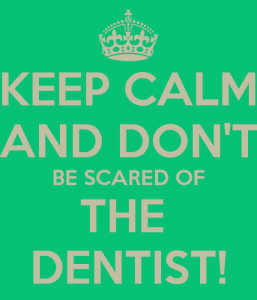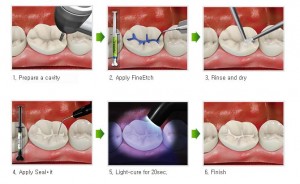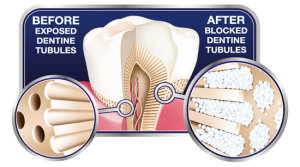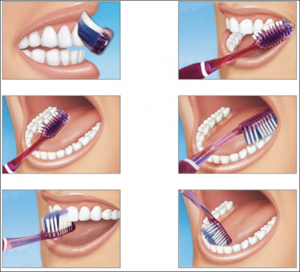Here you will find blogs written by our professional dentists.
A lot of people have a phobia of the dentist. A lot of the time this can stem from a previous bad experience when young, or you may just have always hated the dentist.
Unfortunately, this fear can lead to people avoiding the dentist, and this then leads to a worsening of their dental problems. There are a few things that you can do to cope with the fear.
1) Find a gentle dentist. You can get recommendations of family or look at online reviews of local dentists on facebook or google. Dentist’s that have worked with children are often quite good with working with nervous adults as well.
2) Get to know your dentist. Ideally, you want to start with a simple check-up. You can talk through your fears with your dentist and make a plan of how best to proceed.
3) Start with something simple and work up to the bigger treatment as your confidence increases.
4) Distractions- If the noise bothers you can take some headphones and turn up your music loud. In our surgery, we have a T.V on the ceiling that works as a good distraction. If you are good at yoga or meditation, you can practice your breathing exercises.
5) Stay in control- We always advise patients to raise their hand if they want us to stop at any time. This signal allows you to be in control of treatment and take breaks if needed.
6) Laughing gas- We provide ‘happy gas’ for nervous patients. This laughing gas is the same as the ‘gas and air’ used by ladies in labour. This gas doesn’t knock you out, but helps relax you, making treatment easier to get through. You can drive home as normal after having the laughing gas.
7) General Anaesthetic- If you really can’t cope with treatment in the surgery or if you require a lot of work, we can arrange a general anaesthetic.
All of our dentists at Ocean Breeze Dental have experience working with nervous patients. Contact us on 5255 2584 or you can book online at www.oceanbreezedental.com.au. Don’t let your fears hold you back from a confident and comfortable smile.
Last month we discussed tooth brushing technique.
To go along with brushing twice a day you also need to clean between your teeth.
If your skipping cleaning between your teeth, you are missing half of the surfaces in your mouth. Most of the cavities we see start between the teeth which shows how important inter-dental cleaning is. The most common form of inter-dental cleaning is flossing.
Flossing Technique-
You can wind a length of floss around your middle fingers and then slowly wind down the length of floss as you move from gap to gap. Use your thumb’s and index fingers to guide the floss between the teeth.
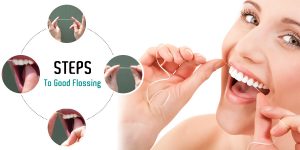
Careful for the papilla between your teeth- the v-shape area of gum between the two teeth. Move the floss gently down one side of the papilla and wrap it around the edge of the tooth and pull the floss upwards removing any plaque on that surface. Then in the same gap gently move the floss down the other aspect of the papilla and up the inside of the next tooth. No sawing motion required!
Interdental brushing-
If you have bigger gaps, implants or bridges you may have to use inter-dental brushes instead of floss. Choose the biggest brush that fits the space without resistance and brush from both the outside and inside of the tooth. You may find you need a combination of different size brushes or still use floss in the tighter spaces as well.
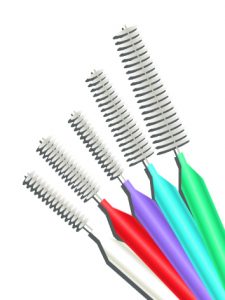
See www.oceanbreezedental.com.au if you missed last months ‘brushing technique’.
Dr Samantha Ho
It is important to look after children’s teeth for a few reasons.
- Firstly, to get them into good habits that will carry over into adulthood.
- Secondly, the baby or ‘deciduous’ teeth act as placeholders for the adult teeth, if the baby teeth are lost early children are more likely to need braces.
Some first teeth can be in children’s mouth’s for over ten years, so it is important that they are healthy and non-painful for this time. The first adult teeth start coming through at around the age of five or six, so it is critical to be taking good care of these teeth.
Cleaning- it is important to be cleaning your children’s teeth as soon as they come through. You can get extra soft baby toothbrushes or just use a bit of gauze to wipe over the teeth.
Children need help with brushing until the age of 8. Below three years old, only a smear of toothpaste is needed, over three a pea sized blob of toothpaste is recommended.
It is a good idea to start bringing your child to the dentist from the age of two. We can catch any issues early and also make the experience as simple and positive as possible so that they are not afraid later on.
When the permanent first molars come through (around the age of six), we can consider fissure sealing the teeth. The biting surface’s of molars have pits and grooves in the teeth called ‘fissures’. Bacteria, in the form of plaque, can gather in these grooves and can be difficult to clean out. This is why these surfaces are prone to decay. The sealants cover over this rough surface and protect the tooth from decay. The picture below shows the surface of a molar before and after sealing the tooth.
The government child dental benefits scheme, is closing soon. This scheme currently covers children age 2-17, who are eligible for Medicare and families are receiving certain government benefits such as ‘Family Tax Benefit Part A.’ To check if your child is covered pop into Ocean Breeze Dental (3/73 The Trak Arcade, The Terrace, Ocean Grove) with their Medicare card.
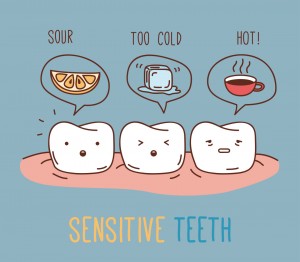 Everyone gets sensitivity sometimes usually from cold drinks or ice cream. With the cold weather on its way sometimes just breathing in the cold air can set it off. Sensitivity can mean you have a cavity in your tooth, and the food is getting into the nerve causing pain.
Everyone gets sensitivity sometimes usually from cold drinks or ice cream. With the cold weather on its way sometimes just breathing in the cold air can set it off. Sensitivity can mean you have a cavity in your tooth, and the food is getting into the nerve causing pain.
Sensitivity is more concerning if you are getting sensitive to hot things or sweat, it is more likely to be a hole in your tooth.
Generalised cold sensitivity can mean that you have dentine hypersensitivity. This is when the enamel of your tooth has worn away or thin, and the cold can get into the layer of tooth underneath called the ‘dentine.’ This most commonly happens at the gum line because the enamel is naturally thin in this area. The dentine is porous so cold can get into the pulp (the nerve).
How can I fix this?
Sensitive toothpastes like Sensodyne or Colgate Sensitive have ingredients in them that block these tubules and stop the cold getting in the tooth. This protection builds up over time, so if you have on-going sensitivity, you will need to keep using these toothpastes.
There are also desensitising treatments your dentist can provide that work in a similar way. If the sensitivity does not ease or you get sensitivity to heat or sugar you should consider seeing a dentist. You may have a cavity, the sooner you catch it the better!
Make sure you are using a soft toothbrush and not brushing too hard. Plaque has the consistency of cream, so you do not need to scrub hard to get it off your teeth.
Check out oceanbreezedental.com.au for more information on brushing technique. You can also pop into the practice (3/73 The Trak Arcade, The Terrace, Ocean Grove) to pick up some free sensitive toothpaste samples. (Note- We are not affiliated with any toothpaste companies and do not recommend any brand in particular. We do find that the ‘sensitive’ toothpastes do help patients with dentine sensitivity, however.)
Most of us are handed a toothbrush at a young age and have to figure it out. Here are some tips for optimal oral hygiene.
To keep your mouth healthy, you need to brush twice a day. Plus clean between your teeth with floss or interdental brushes. Children will need help with cleaning until they are about nine years old as younger children lack the manual dexterity for optimal brushing.
I recommend a soft toothbrush as plaque only has a ‘ double cream’ consistency. Therefore, a soft toothbrush can easily remove this. Using a soft brush also allows you to get up to the gum margin without causing gum tenderness. Using a hard toothbrush or applying pressure onto the gums can also lead to tooth wear. I see many patients with wear and recession in the roots of their teeth from brushing overly hard.
Electric toothbrushes are excellent for good cleaning. You can get the same result with a manual toothbrush if you are thorough with your cleaning but an electric toothbrush does the work for you. I would choose a rechargeable toothbrush over a battery powered one. There are two types of cleaning movement’s available these are oscillating and vibrating (or sonic), a study has shown them to be very close in efficiency, so it is a personal preference. I would also make sure it has a timer included. If you brush too hard, then find one that has a pressure sensor included.
Use a fluoride toothpaste as this has been proven to prevent cavities and strengthen enamel. You only need a pea size blob on your toothbrush and just a smear for children under three. Once you have finished cleaning, you can spit excess toothpaste out but don’t rinse! Try and avoid eating or drinking for 30 minutes after brushing to let the fluoride sit on your teeth and do its work.
Brushing technique- Firstly, tilt your brush at a 45-degree angle and aim the bristles at the gum margin.
Use small circulation motions to brush up and down the tooth (let the brush do the work for you with an electric brush). Do the outside surface of all your teeth and then the inside surface of all your teeth.
Then move to the biting surfaces of your teeth, place the bristles on top of the occlusal surfaces and brush back and forth.
You should brush for a full 2 minutes. There are a lot of free apps to time your brushing and some fun ones for the kids to use as well.
Of course, cleaning between your teeth with floss or interdental brushes is important too; I will cover this next month, or you can find more tips on our website: www.oceanbreezedental.com.au/tips
- « Previous
- 1
- 2
- 3
- Next »

